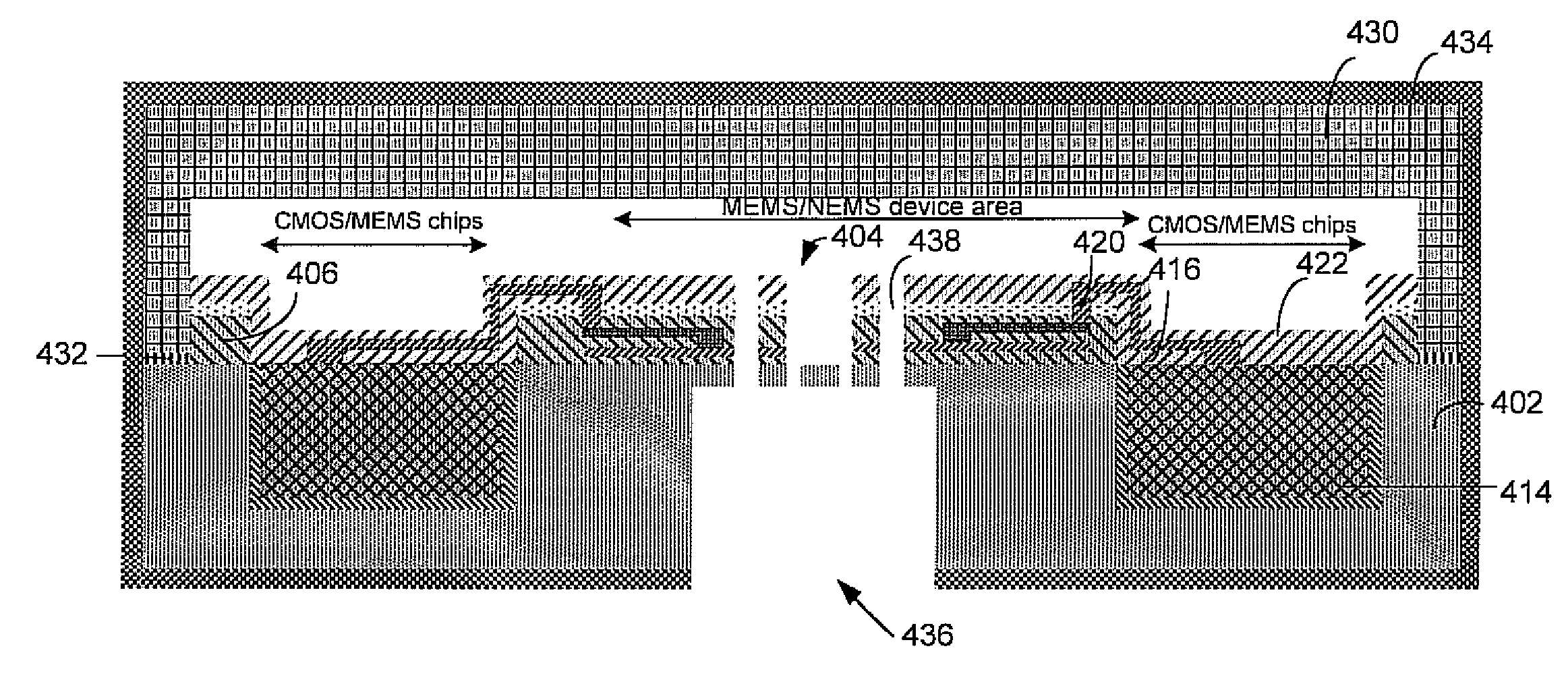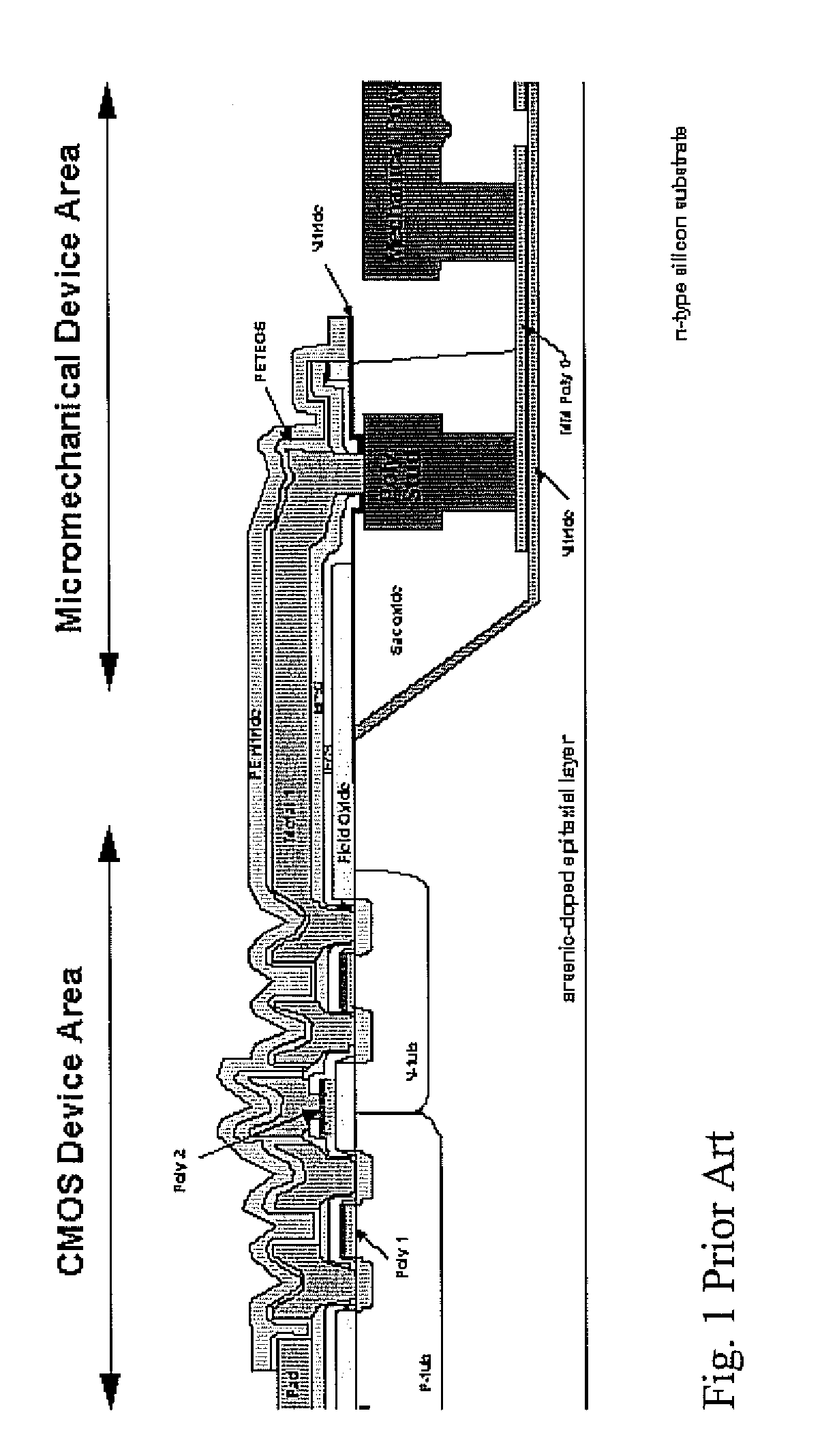Method of forming monolithic cmos-mems hybrid integrated, packaged structures
- Summary
- Abstract
- Description
- Claims
- Application Information
AI Technical Summary
Problems solved by technology
Method used
Image
Examples
Embodiment Construction
[0028]Referring to the various Figures there is shown an effective, reliable, and relatively low cost method of integration between CMOS-MEMS / NEMS.
[0029]In one embodiment of a “post CMOS” or “CMOS first” hybrid integration approach shown in FIGS. 3a-3h, the already fabricated CMOS semiconductor substrate is modified to achieve this integration. The CMOS device area is first protected so as not to affect their functionality in the ensuing process; fabrication is continued on the same substrate and integrated by coupling the micromechanical structures in a hybrid approach by placing the MEMS / NEMS dies that have been diced, The integrated system is finally packaged in an effective manner.
[0030]Again referring to FIGS. 3a-h, there is shown a cross-sectional process flow for the “Post CMOS” monolithic hybrid integration approach on a semiconductor substrate 302. A
[0031]CMOS fabricated semiconductor substrate 302 with dielectric layers and metallization in FIG. 3a is provided as a startin...
PUM
 Login to View More
Login to View More Abstract
Description
Claims
Application Information
 Login to View More
Login to View More - R&D
- Intellectual Property
- Life Sciences
- Materials
- Tech Scout
- Unparalleled Data Quality
- Higher Quality Content
- 60% Fewer Hallucinations
Browse by: Latest US Patents, China's latest patents, Technical Efficacy Thesaurus, Application Domain, Technology Topic, Popular Technical Reports.
© 2025 PatSnap. All rights reserved.Legal|Privacy policy|Modern Slavery Act Transparency Statement|Sitemap|About US| Contact US: help@patsnap.com



